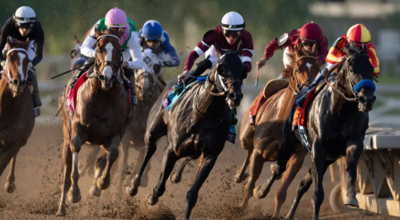
Organisers of the Breeders' Cup World Championships in the United States and the Melbourne Cup in Australia are setting new safety standards in horse racing.
These initiatives combine world-class veterinary technology and welfare initiatives for jockeys, each of which are designed to make the sport much safer.
The Breeders' Cup - A Model of Uniform Integrity
A new safety framework will be used at the 2025 Breeders' Cup World Championships at Del Mar on October 31 and November 1, under the jurisdiction of the Horseracing Integrity and Safety Authority (HISA) and its Horse Racing Integrity & Welfare Unit (HIWU).
Medication is not allowed within 48 hours of the Championship races, and every participant must go through testing for banned substances.
There will also be intensive veterinary checks with world-class equine regulatory vets from North America and Europe conducting multiple inspections on every horse.
The plan is to have continuous checks on the horses in the build-up, using security personnel, veterinarians, video monitoring and regulators to form multiple layers of oversight.
Surface safety is also another critical aspect. Del Mar's main dirt track is subject to several inspections and scientific testing handled by the California Horse Racing Board. Trainers and jockeys will receive the results of track and weather conditions daily to build transparency.
Final protocols involve runners undergoing pre- and post-race drug tests, a 96-hour equine security surveillance window, and hair follicle testing.
The Breeders' Cup is also taking jockey welfare as seriously as equine safety. There are emergency plans in place and rapid medical response teams on site.
Tracks are also continuously being monitored to mitigate risk, while rider safety gear is a must.
The Breeders' Cup was a founding member of the Thoroughbred Safety Coalition and pushed for the reforms that eventually became the basis for stricter nationwide rules.
A Technological Shift in Safety at the Melbourne Cup
After the death of Anthony Van Dyck during the 2020 Melbourne Cup, Racing Victoria set new veterinary protocols in a bid to prevent a similar tragedy.
In the four Melbourne Cups since then, there has not been a single fatal injury. Those protocols are still in place for this year's edition on November 4, but will work even better thanks to advanced imaging technology.
Any international horse that enters the Melbourne Cup, Cox Plate or Caulfield Cup must go through Computed Tomography (CT) scans of their distal limbs before travelling.
Horses are also to undergo veterinary inspections and will face even more CT scans when they get to Victoria before they are allowed to race.
If there are any issues, Positron Emission Tomography (PET) scans will reveal whether they are detrimental to the horse's safety.
Trialled last year, PET allows vets to examine the molecular-level activity of the bone and detect stress fractures or lesions.
MRI remains a viable alternative, provided the horse is based in areas without access to CT facilities. However, Australia takes no prisoners when it comes to risk assessment.
These checks are also crucial for the gambling industry. Betting is a core part of the Melbourne Cup experience, and the race cannot have compromised contenders.
People who engage in Melbourne Cup 2025 betting on the platforms featured on comparison outlet AustralianBettingSites can be confident that every runner has passed through world-class veterinary checks.
Supporting Jockeys Digitally
Discussions around welfare in Australian horse racing go beyond the horses. The Victorian Jockeys' Association (VJA) partnered with Racing Victoria and the state government to create a first-of-its-kind digital wellbeing platform for jockeys.
Readiness and the Swinburne Centre for Mental Health designed the app, allowing jockeys to undertake weekly self-assessment surveys on mood, sleep, energy and job satisfaction.
Depending on their responses, they can be connected to confidential resources such as psychological services, financial counselling and more.
The app also lets jockeys connect to their peers. This form of socialisation is crucial, as the sport can sometimes be a lonely journey.
It also facilitates mentoring for younger jockeys who are looking to improve their craft and extends community support.
The app empowers jockeys to manage their wellbeing and helps their friends, family and other associated parties understand the stress they are under.
The authorities are thankfully beginning to realise that safeguarding the jockeys requires as much proactivity as protecting the equine athletes.


(0) comments
We welcome your comments
Log In
Post a comment as Guest
Keep it Clean. Please avoid obscene, vulgar, lewd, racist or sexually-oriented language.
PLEASE TURN OFF YOUR CAPS LOCK.
Don't Threaten. Threats of harming another person will not be tolerated.
Be Truthful. Don't knowingly lie about anyone or anything.
Be Nice. No racism, sexism or any sort of -ism that is degrading to another person.
Be Proactive. Use the 'Report' link on each comment to let us know of abusive posts.
Share with Us. We'd love to hear eyewitness accounts, the history behind an article.